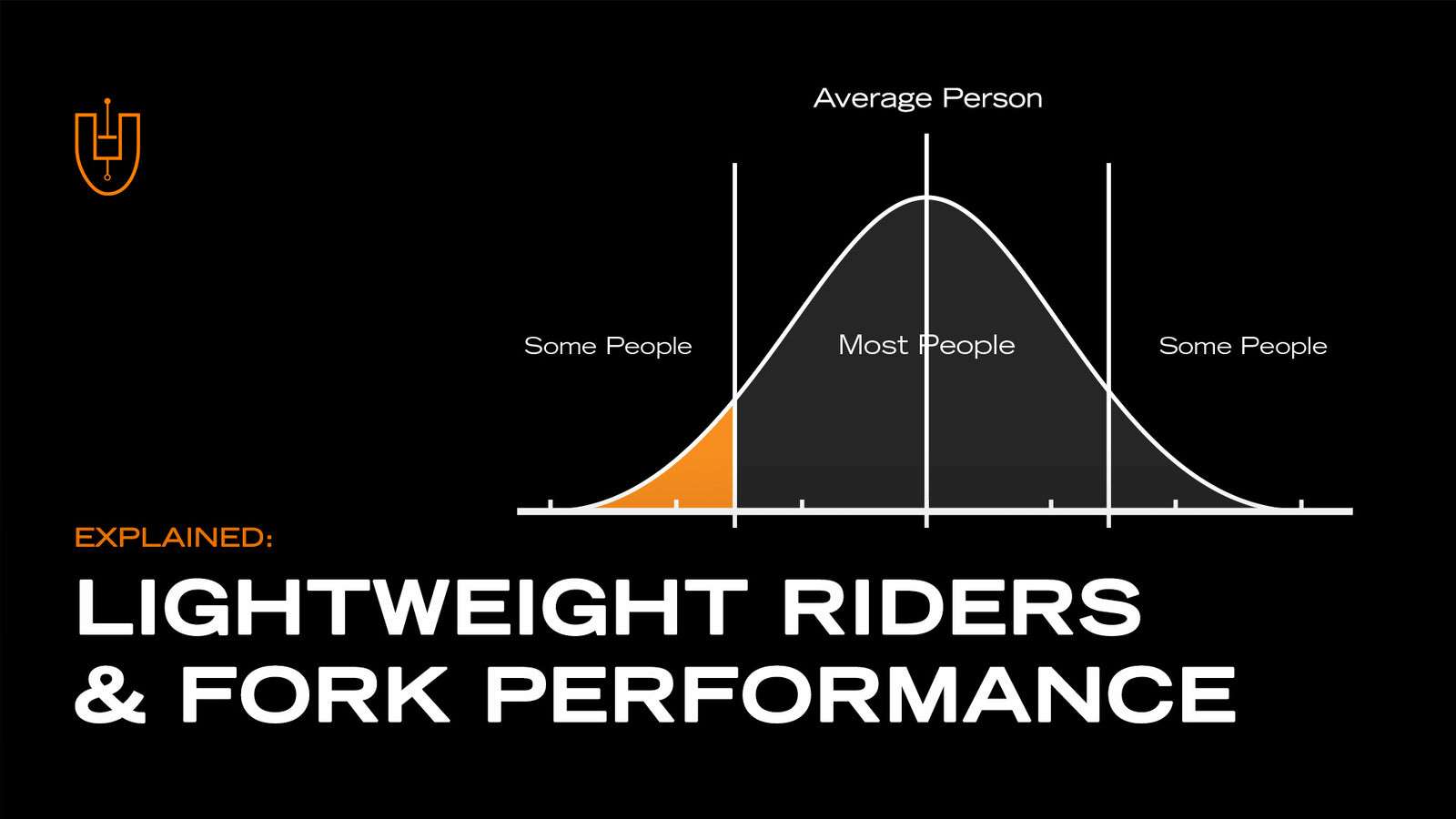Lightweight Riders & Fork Performance

Almost all products, including mountain bikes and their suspension parts, are designed with the ‘average person’ in mind, to allow the product to be suitable for a large proportion of people.
Mountain bike suspension is designed to manage specific ranges of loads, and those loads generally come from the movements of the weight of the rider + bike and are opposed by the terrain (or vice versa, depending on how you want to look at it).

This means that those who fall on either side of the bell curve are usually lighter or heavier in weight than the design was targeted for, and are at more of a disadvantage when it comes to suspension performance.
While there are no exact definitions or numbers to determine exactly who is a "heavy rider" or ‘light rider’, riders weighing less than about 65kg (145 pounds) are likely to suffer disproportionately more from friction and the non-scalable aspects of an air fork like ramp up from lower legs.
Friction
Most forks these days are air sprung, due to being lighter and more adjustable when compared to coil. The biggest downside to air springs is friction, caused by moving seals. There can be approximately double the friction in an air fork compared to coil, and for lighter riders, these small things add up to a higher force relative to their weight.
Air spring design
Air springs designs have also come a long way, but due to the nature of their design, stock air spring systems generally take a bit of force to initiate the start of the travel as seen in the spring curve below. When combined with the initial stiction, it can make the beginning of the stroke feel relatively harsh.

Lower leg ramp
You’ll hear a lot of talk about positive and negative air chambers, however there is actually a third chamber within your fork, located between the bottom of your air spring stanchion, and the end of the lower leg.

Labelled here as ‘THE SECRET AIR CHAMBER’ and is the air volume within the lower leg.
The air pressure at sea level is not really 0psi, but actually about 13psi above absolute vacuum - this is called 13psi "absolute pressure", or 0psi "gauge pressure" since gauges are typically calibrated to tell you the pressure difference between whatever you're measuring and the outside atmosphere (working on the assumption that you're at something like sea level, not on top of Everest). This means that your fork is put together with about 13psi inside the lower leg. But given that there’s ALSO about 13psi atmospheric pressure outside the fork, so as long as nothing moves, those two pressures oppose each other equally, and cancel out to zero force. This is why zero gauge pressure means zero force.
However, suspension forks do move, that's kind of the point of them. As a result, that SECRET AIR CHAMBER (all capitals because it's SECRET) changes in volume, and that 13psi inside them becomes a much higher pressure by bottom out. Meanwhile, inconveniently, the outside atmosphere is NOT increasing in pressure, so it's no longer canceling this out. In fact, the pressure in the lowers can deliver up to 260N (58lbs) of force on its own by the time the fork bottoms, in certain forks. That's a lot of force, especially for light riders.
Test it out for yourself - record the air pressure in your air spring as normal, then release all the pressure and remove the valve core (or the whole top cap if you like). Bounce on the fork and note how much resistance there is to bottoming even with negligible air spring pressure. That resistance is on top of the primary air spring’s intrinsic ramp.
How do lightweight riders benefit from our upgrades?
| Smashpot Coil Conversion System | Secus Air Spring Upgrade |
|
• Allows lighter riders to have full use of the fork (significantly reduced lower leg ramp)
• Zero air spring seal friction • Reduced overall stiction and friction everywhere in the travel |
• Larger negative chamber reduces initial spring rate, meaning the force required to move through first 20mm of travel • Larger negative chamber allows you to run higher pressures for more support • Allows the lower leg chamber more volume, reducing this non-scalable ramp up |
| Learn more about the Secus here. |

